invention of agriculture
description: transition from hunter gatherer to settled peoples
70 results
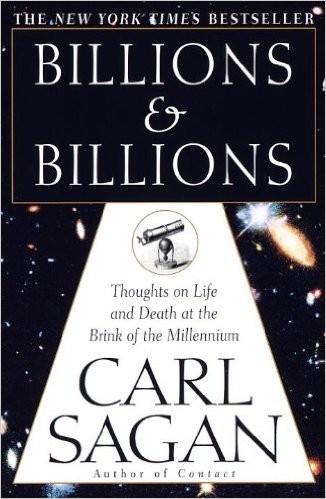
Billions & Billions: Thoughts on Life and Death at the Brink of the Millennium
by
Carl Sagan
Published 11 May 1998
(Small comfort for its many victims and their loved ones.) Exponentials are also the central idea behind the world population crisis. For most of the time humans have beef on Earth the population was stable, with births and deaths almost perfectly in balance. This is called a "steady state." After the invention of agriculture—including the planting and harvesting of those grains of wheat the Grand Vizier was hankering for—the human population of this planet began increasing, entering an exponential phase, which is very far from a steady state. Right now the doubling time of the world population is about 40 years.
…
They also satisfy an almost-forgotten craving for the hunt. * The crisis was resolved when Mr. Abdul-Rauf agreed to stand during the anthem, but pray instead of sing. Since our passions for sports run so deep and are so broadly distributed, they are likely to be hardwired into us—not in our brains but in our genes. The 10,000 years since the invention of agriculture is not nearly enough time for such predispositions to have evolved away and disappeared. If we want to understand them, we must go much further back. The human species is hundreds of thousands of years old (the human family several millions of years old). We have led a sedentary existence—based on farming and domestication of animals—for only the last 3 percent of that period, during which is all our recorded history.
…
For example, much methane is sequestered in bogs (which sometimes produces the eerily beautiful dancing lights called "will-o-the-wisps"). It might begin to bubble up at an increasing pace as the Earth warms. The additional methane warms the Earth still further, and so on, another positive feedback. Wallace Broecker of Columbia University points to the very quick warming that happened about 10,000 B.C., just before the invention of agriculture. It's so steep that, he believes, it implies an instability in the coupled ocean-atmosphere system; and that if you push the Earth's climate too hard in one direction or another, you cross a threshold, there's a kind of "bang," and the whole system runs away by itself to another stable state.

The Technology Trap: Capital, Labor, and Power in the Age of Automation
by
Carl Benedikt Frey
Published 17 Jun 2019
Economic historians have long debated why the technology boom of the 1760s in Britain took so long to produce higher standards of living, and economists are now engaged in a strikingly similar debate about why staggering advances in automation so far have failed to show results in the pockets of average people. This book is an attempt to connect two large bodies of scholarly research to put the Gates paradox in historical perspective. It tracks the expanding frontiers of technology from the invention of agriculture to the rise of AI, tracing the fates of humans as technology has progressed. I should warn the reader that this is not a balanced account. A book of this scope must be selective and carefully prioritize what it discusses. The history of technology is the subject of an extensive literature that I cannot do justice to here.
…
The chapters that follow divide economic history into four episodes. Part 1, titled “The Great Stagnation,” consists of three chapters that concern preindustrial technologies and their effects on people’s standard of living. Chapter 1 gives a succinct summary of advances in technology from the invention of agriculture some 10,000 years ago up until the dawn of the Industrial Revolution. It shows that many significant technologies emerged before the eighteenth century, but they failed to improve material conditions for ordinary people. Chapter 2 demonstrates that though living standards had improved before the Industrial Revolution, growth was predominantly based on trade.
…
The age of inequality began with the Neolithic revolution. The following period constituted only a brief episode of human history, relative to the forager era that preceded it. As noted, in the absence of any technology for storing meat, instant consumption was inevitable, and no significant food surplus was attainable. It was only after the invention of agriculture that food could be stored, land could be owned, and individuals could accumulate a surplus of significance—which in turn introduced the concept of property rights and a political structure to uphold those rights. Of course, prehistory does not provide any records of how the first political structures came about, but the rise of the feudal system in medieval Europe clearly constituted an exchange of peasant labor for knightly protection.

Drunk: How We Sipped, Danced, and Stumbled Our Way to Civilization
by
Edward Slingerland
Published 31 May 2021
All over the world, wherever you find people, you find them doing disgusting things, incurring incredible costs, and expending ridiculous amounts of resources and effort for the sole purpose of getting high.2 Given how central the intoxication drive is to human existence, the archaeologist Patrick McGovern has only semi-facetiously suggested that our species be referred to as Homo imbibens.3 This desire to get mentally altered has ancient roots, ones that can be traced to the very beginnings of civilization.4 At sites in eastern Turkey, dating to perhaps 12,000 years ago, the remains of what appear to be brewing vats, combined with images of festivals and dancing, suggest that people were gathering in groups, fermenting grain or grapes, playing music, and then getting truly hammered before we’d even figured out agriculture. In fact, archaeologists have begun to suggest that various forms of alcohol were not merely a by-product of the invention of agriculture, but actually a motivation for it—that the first farmers were driven by a desire for beer, not bread.5 It is no accident that the earliest human archaeological finds from around the world always include huge numbers of specialized, elaborate vessels used solely for the production and consumption of beer and wine.
…
Given that humans have only been living in large-scale societies for something like 8,000 to 10,000 years, this would mean that humans have remained genetically unchanged since we were hunter-gathers roaming the Pleistocene African plains. Another common belief is that, since the advent of large-scale societies and the invention of agriculture, humans have cast off the shackles of day-to-day survival challenges, and thereby freed themselves from the pressures of genetic evolution. Neither of these beliefs is true. For instance, people from cultures that raise cattle have, sometime in the last 8,000 years, genetically adapted to digesting milk as adults.
…
In modern urban societies, increased population density leads to increased innovation, as measured by proxies such as number of new patents or R&D activity per capita.35 Cultural accumulation allows not only the gradual building-up of technology and knowledge, but also creates a virtuous circle where existing cultural resources become raw material for new, individual inventions. With the invention of agriculture and advent of large-scale civilizations, this virtuous circle went into hyperdrive. Sharing across massive empires united scores of local ethnicities and ecosystems, all trading raw materials, cultural knowledge, and technology with one another. This process of cultural evolution has given us automobiles, airplanes, high-speed elevators, and the internet.
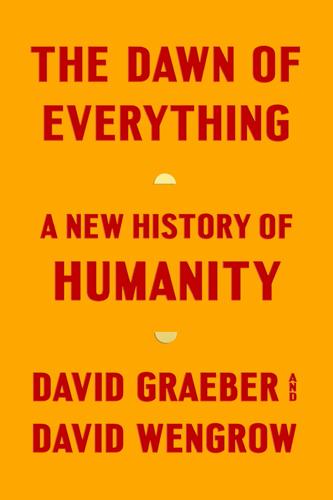
The Dawn of Everything: A New History of Humanity
by
David Graeber
and
David Wengrow
Published 18 Oct 2021
Decisions were reached through ‘face-to-face discussion’; there were ‘few personal possessions’ and ‘no formal political leadership or strong economic specialization’.3 Diamond concludes that, sadly, it is only within such primordial groupings that humans ever achieved a significant degree of social equality. For Diamond and Fukuyama, as for Rousseau some centuries earlier, what put an end to that equality – everywhere and forever – was the invention of agriculture, and the higher population levels it sustained. Agriculture brought about a transition from ‘bands’ to ‘tribes’. Accumulation of food surplus fed population growth, leading some ‘tribes’ to develop into ranked societies known as ‘chiefdoms’. Fukuyama paints an almost explicitly biblical picture of this process, a departure from Eden: ‘As little bands of human beings migrated and adapted to different environments, they began their exit out of the state of nature by developing new social institutions.’4 They fought wars over resources.
…
Rousseau’s model of human society – which, he repeatedly emphasizes, is not meant to be taken literally, but is simply a thought experiment – involves three stages: a purely imaginary State of Nature, when individuals lived in isolation from one another; a stage of Stone Age savagery, which followed the invention of language (in which he includes most of the modern inhabitants of North America and other actually observable ‘savages’); then finally, civilization, which followed the invention of agriculture and metallurgy. Each marks a moral decline. But, as Rousseau is careful to emphasize, the entire parable is a way to understand what made it possible for human beings to accept the notion of private property in the first place: The first man who, having enclosed a piece of land, thought of saying, ‘This is mine’, and found people simple enough to believe him, was the real founder of civil society.
…
At such times, people also gathered at the site to process massive quantities of nuts and wild cereal grasses, making these into festive foods, which presumably fuelled the work of construction.39 There is some evidence to suggest that each of these great structures had a relatively short lifespan, culminating in an enormous feast, after which its walls were rapidly filled in with leftovers and other refuse: hierarchies raised to the sky, only to be swiftly torn down again. Ongoing research is likely to complicate this picture, but the overall pattern of seasonal congregation for festive labour seems well established. Such oscillating patterns of life endured long after the invention of agriculture. To take just one example, they may be key to understanding the famous Neolithic monuments of Salisbury Plain in England, and not just because the arrangements of standing stones themselves seem to function (among other things) as giant calendars. Stonehenge, framing the midsummer sunrise and the midwinter sunset, is the most famous of these.
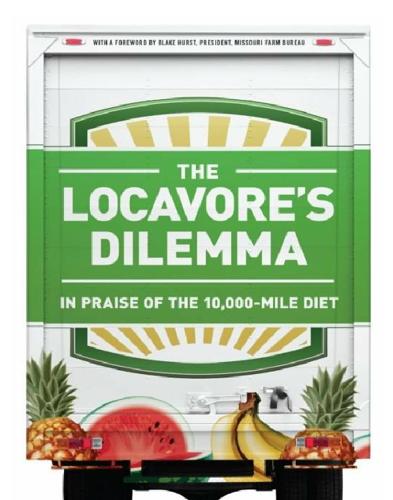
The Locavore's Dilemma
by
Pierre Desrochers
and
Hiroko Shimizu
Published 29 May 2012
For example, many large mammal and bird species disappeared soon after humans reached the shores of the Americas, Australia, New Zealand, Madagascar, and countless small islands.2 Perhaps their most profound impact over time, however, was that they profoundly altered the natural fire regime of countless ecosystems through deliberate and regular burning of the landscape, a practice which both opened and reduced forested landscape and created or “refreshed” prairies and meadows, the process resulting in a significant increase of large herbivores and better hunting conditions.3 With the invention of agriculture came the creation of cropland and pastureland out of forests and wetlands; the opening up of forest canopies through the cutting of tree sprouts and limbs for fodder and the grazing of animals; the removal of predators and competing wild herbivorous mammals; and the worldwide transfer and adaptation of domesticated plants and animals.4 In the words of Norwegian botanist Knut Faegri, apart from “some small and doubtful exceptions, all vegetation types were created or modified by man. . . .
…
As the geographer Brian Murton observes, famines have plagued humankind for at least 6,000 years and have long been used by scholars and chroniclers to “slice up history into manageable portions.”9 While researchers still disagree on the widespread, recurring, and severe character of prehistorical hunger, there is a general consensus that, with the invention of agriculture, famines typically resulted from a succession of mediocre harvests rather than from an isolated crop failure. Some could be traced back to human factors such as wars, ethnic and religious persecution, price controls, protectionism, excessive taxation, and lack of respect for private property rights.
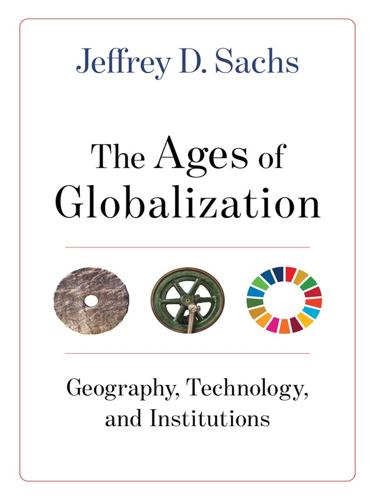
The Ages of Globalization
by
Jeffrey D. Sachs
Published 2 Jun 2020
The presence of coal and oil reserves meant a lot more after the invention of the steam engine and the internal combustion engine, respectively. The intense sunshine of the deserts will mean a lot more in the future with the deployment of low-cost photovoltaic energy. Such examples run deep throughout the human experience. The control of fire enabled early humans to move to colder biomes; the multisite invention of agriculture enabled dense human settlements in alluvial plains; the domesticated horse expanded the zones of agriculture; Columbus’s voyages of discovery ultimately led to massive European migrations to the Americas; the Suez and Panama canals deeply altered the costs and patterns of global trade and, with global warming, new trade routes in the Arctic Sea may do the same; the British mass production of quinine to control malaria enabled the European conquest of tropical Africa; the railroad opened up the interiors of continents for food production and trade.
…
Initially, a small proportion of humanity took up the permanent cultivation of crops. Over time, more and more of humanity settled in permanent locations for farming, forsaking the nomadic lives of hunters and gatherers. Thus, the Neolithic Age became the age of globalization by farming. The invention of agriculture in Western Asia was preceded by sedentism, which began roughly 14,500 years ago. The cause was a warming of the climate toward the end of the Pleistocene and the start of the Holocene. The rise in temperature increased the availability of food and enabled communities in the eastern Mediterranean to establish more permanent settlements even before they cultivated crops.
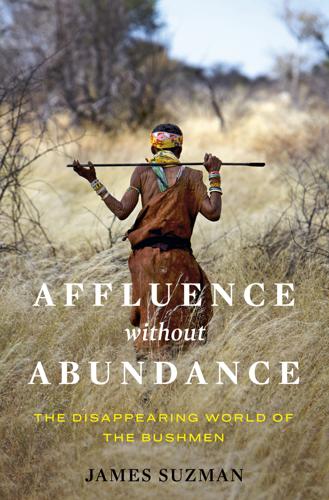
Affluence Without Abundance: The Disappearing World of the Bushmen
by
James Suzman
Published 10 Jul 2017
The story of southern Africa’s Bushmen encapsulates the history of modern Homo sapiens from our species’ first emergence in sub-Saharan Africa through to the agricultural revolution and beyond. It is an incomplete story, one pieced together from fragments of archaeology, anthropology, and most recently genomics. Taken together, these fragments offer a sense of how hunter-gatherers came to exemplify elements of Keynes’s Utopia and how, since the invention of agriculture, our destiny has been shaped by our preoccupation with solving the “economic problem.” The glue that holds these fragments together is the story of one particular Bushman group, the Ju/’hoansi of Namibia. The words Ju and /hoan translate into English as “people” and “truth.” Thus “Ju/’hoan” means “Real Person” or “Proper Person” and “Ju/’hoansi” means “Real People.”
…
They simply poisoned the carcasses of dead animals and left these for the predators—and anything else that stumbled across them, from jackals to vultures—to consume. In eradicating local predators, the Herero settlers were doing something that farming peoples across the globe had done since the invention of agriculture. And that involved reconceptualizing elements within it in terms of the benefits they offered or the risks they posed. Unwelcome elements, like lions, wild dogs, and hyenas, were classified as pests. Now, two decades after arriving in G/am and with their predator problem dealt with, the Herero still covet the rich grasslands of Nyae Nyae and occasionally cut holes in the veterinary fence to sneak their cattle into Nyae Nyae.

A Poison Like No Other: How Microplastics Corrupted Our Planet and Our Bodies
by
Matt Simon
Published 24 Jun 2022
They’re extra worried about babies, whose bodies are especially susceptible to the hormonal interference of EDCs, and who are gulping millions of microplastics a day in their formula and crawling around in plastic-laden indoor dust: one study found that infant feces is loaded with 10 times the amount of polyethylene terephthalate (a.k.a. polyester) as adult feces. Humanity has fallen into a plasticine progress trap: the modern world wouldn’t be possible without polymers, but the wundermaterials have locked us into an increasingly dark trajectory. Like the invention of agriculture made our species dependent on crops to survive, and like the Industrial Revolution hooked civilization on fossil fuels, so too has plastic set humanity down an ostensibly prosperous path that belies the reality of environmental defilement. Without plastic we’d have no modern medicine or gadgets or wire insulation to keep our homes from burning down.
…
Geologists have been arguing about this notion of the Anthropocene, a new age in Earth history characterized by humanity’s transformation of the planet.25 The controversy isn’t about whether the age exists, but what signal in that geological record should mark its inception. You could make the case that it was the invention of agriculture, when we gave up the freedom of the hunter-gatherer lifestyle for the prison of the farm: body-breaking labor to produce grains that made us sicker yet created food surpluses that fed a booming population26—such a big population, in fact, that we had to invent plasticulture to sustain it.

Here Comes Everybody: The Power of Organizing Without Organizations
by
Clay Shirky
Published 28 Feb 2008
Society is not just the product of its individual members; it is also the product of its constituent groups. The aggregate relations among individuals and groups, among individuals within groups, and among groups forms a network of astonishing complexity. We have always relied on group effort for survival; even before the invention of agriculture, hunting and gathering required coordinated work and division of labor. You can see an echo of our talent for sociability in the language we have for groups; like a real-world version of the mythical seventeen Eskimo words for snow, we use incredibly rich language in describing human association.
…
These groups aren’t the classic American interest groups of yore; many of the most popular groups tell us surprising things about what our society is like right now. Stay at Home Moms and the Politics of Exclusion One of the most popular current groups on Meetup is Stay at Home Moms (SAHM). Mothers with young children have been gathering in groups since before the invention of the internet, in fact before the invention of agriculture. This is an old pattern, so why would SAHM Meetups be so popular? The answer, in one sentence, is that modern life has raised transaction costs so high that even ancient habits of congregation have been defeated. As a result, things that used to happen as a side effect of regular life now require some overt coordination.

The omnivore's dilemma: a natural history of four meals
by
Michael Pollan
Published 15 Dec 2006
Corn is the hero of its own story, and though we humans played a crucial supporting role in its rise to world domination, it would be wrong to suggest we have been calling the shots, or acting always in our own best interests. Indeed, there is every reason to believe that corn has succeeded in domesticating us. To some extent this holds true for all of the plants and animals that take part in the grand coevolutionary bargain with humans we call agriculture. Though we insist on speaking of the "invention" of agriculture as if it were our idea, like double-entry bookkeeping or the lightbulb, in fact it makes just as much sense to regard agriculture as a brilliant (if unconscious) evolutionary strategy on the part of the plants and animals involved to get us to advance their interests. By evolving certain traits we happen to regard as desirable, these species got themselves noticed by the one mammal in a position not only to spread their 2 4 * THE OMNIVORE'S DILEMMA genes around the world, but to remake vast swathes of that world in the image of the plants' preferred habitat.
…
For better or worse that burlap sack linked a corn buyer anywhere in America with a particular farmer cultivating a particular patch of the earth. With the coming of the railroads and the invention of the grain elevator (essentially a great vertical warehouse filled by conveyor belt and *I'm drawing on the excellent account of the invention of agricultural commodities in William Cronon's Nature's Metropolis: Chicago and the Great West (1991). 60 * THE OMNIVORE'S DILEMMA emptied by spigot) the sacks suddenly became a problem. Now it made sense to fill railroad cars and elevators by conveyor, to treat corn less as a certain number of discrete packages someone had to haul and more like an unbounded liquid that could be pumped, in effect, by machine.
…
So they developed a deep root system and a ground-hugging crown that in many cases puts out runners, allowing the grasses to recover quickly from fire and to reproduce even when grazers (or lawnmowers) prevent them from ever flowering and going to seed. (I used to think we were dominating the grass whenever we mowed the lawn, but in fact we're playing right into its strategy for world domination, by helping it outcompete the shrubs and trees.) The second phase of the marriage of grasses and humans is usually called the "invention of agriculture," a self-congratulatory phrase that overlooks the role of the grasses themselves in revising the terms of the relationship. Beginning about ten thousand years ago a handful of particularly opportunistic grass species—the ancestors of wheat, rice, and corn—evolved to produce tremendous, nutritionally dense seeds that could nourish humans directly, thereby cutting out the intermediary animals.The grasses accomplished this feat by becoming annuals, throwing all their energy into making seeds rather than storing some of it underground in roots and rhizomes to get through the winter.
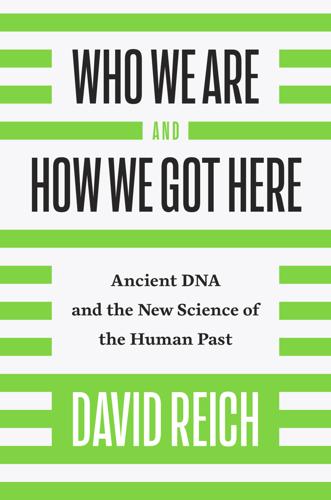
Who We Are and How We Got Here: Ancient DNA and the New Science of the Human Past
by
David Reich
Published 22 Mar 2018
It harbors more than one third of the world’s population and a similar fraction of its language diversity. Pottery was first invented there at least nineteen thousand years ago.1 It was the jumping-off point for the peopling of the Americas before fifteen thousand years ago. East Asia witnessed an independent and early invention of agriculture around nine thousand years ago. East Asia has been home to the human family for at least around 1.7 million years, the date of the oldest known Homo erectus skeleton found in China.2 The earliest human remains excavated in Indonesia are similarly old.3 Archaic humans—whose skeletal form is not the same as that of humans whose anatomically modern features begin to appear in the African fossil record after around three hundred thousand years ago4—have lived in East Asia continuously since those times.
…
While we are beginning to have a relatively good idea of what happened in Europe, Europe does not provide a good road map for what to expect for East Asia because it was peripheral to some of the great economic and technological advances of the last ten thousand years, whereas China was at the center of changes like the local invention of agriculture. What this means is that while we can be sure that the findings from ancient DNA studies in East Asia will be illuminating, we do not yet know what they will be. All we can be sure of is that ancient DNA studies will change our understanding of the human past in this most populous part of the world. 9 Rejoining Africa to the Human Story A New Perspective on Our African Homeland The recognition that Africa is central to the human story has, paradoxically, distracted attention from the last fifty thousand years of its prehistory.
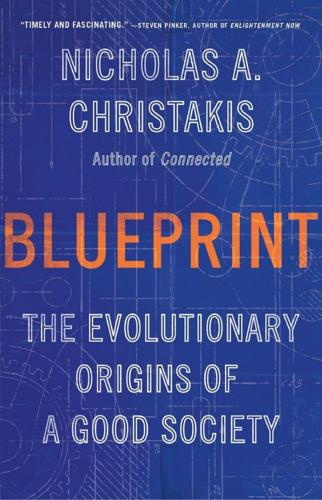
Blueprint: The Evolutionary Origins of a Good Society
by
Nicholas A. Christakis
Published 26 Mar 2019
Aside from the (hugely important) mastery of fire over a million years ago, it is only in the past few thousand years that humans have been able to significantly shape their physical and biological environments—by damming rivers, domesticating plants and animals, generating air pollution, using antibiotics, and so on. Prior to the invention of agriculture and cities, humans did not build their physical environments; they simply chose them. By contrast, humans have always made their social environments. Living socially places special demands on us, and many cognitive capacities and behavioral repertoires evolved in order for us to cope. For example, we are innately equipped to cooperate, and living in cooperative groups favors certain genetic predispositions related to kindness and reciprocity.
…
There is some speculation that people who speak tonal languages (like Mandarin Chinese) face a different adaptive environment than those who do not and that variants of two particular genes affecting brain structure in ways that enhance fluency in such languages may be selected for.62 Innovations in farming or material technology can also have effects. It’s possible that the invention of agriculture may have made the ability to be patient (and wait for crops to grow) more adaptive and that it affected the utility of genes undergirding this disposition.63 Moreover, the domestication of crops typically increases the amount of starch in the diet and therefore affects the adaptive landscape for variants of genes that code for certain enzymes, such as amylase, which makes it easier to digest starchy foods.64 The effect of crops can be even more convoluted.
…
Of course, any acceleration in human evolution may be due to factors other than the emergence of cultural selection pressures. Another issue, for example, is the rise in the number of humans on the planet. With larger populations of an animal, beneficial mutations are more likely to occur somewhere in the population simply by chance; these larger populations of our species may have been facilitated by the invention of agriculture. However, it is also the case that cultural impacts can cease or reverse, which would mean that the genetic changes would be incomplete (a “partial genetic sweep” that did not reach “fixation” in the population). 74. X. Yi et al., “Sequencing of Fifty Human Exomes Reveals Adaptation to High Altitude,” Science 329 (2010): 75–78. 75.

Whole Earth Discipline: An Ecopragmatist Manifesto
by
Stewart Brand
Published 15 Mar 2009
Humans perpetually fight, LeBlanc says, because they always outstrip the carrying capacity of their natural environment and then have to fight over resources. Native peoples developed arcane knowledge of how to find and prepare difficult foods because they’d eliminated all the easy food sources. Peace can break out, though, when carrying capacity is pushed up suddenly, as with the invention of agriculture, or newly effective bureaucracy, or remote trade, or technological breakthroughs. Also a large-scale dieback from pestilence can make for peaceful times—Europe after its major plagues, the Americas after European diseases nearly obliterated the native populations. Such interludes are short: Population quickly rises to once more push against carrying capacity, and normal warfare resumes.
…
The most productive city is one with many cultures, many languages, many neighborhoods, and more kinds of urban experience available than any citizen can keep track of. In this formulation, it is the throwing together of great wealth and great poverty in the urban stew that is part of the cure for poverty. The common theory of the origin of cities states that they resulted from the invention of agriculture: Surplus food freed people to become specialists. You can’t have full-time cobblers, blacksmiths, and bureaucrats, the theory goes, without farms to feed them. Jane Jacobs upended that supposition in The Economy of Cities (1969). “Rural economies, including agricultural work,” she wrote, “are directly built upon city economies and city work.”

The Great Escape: Health, Wealth, and the Origins of Inequality
by
Angus Deaton
Published 15 Mar 2013
Again, quoting Cohen, “The very process that creates the potential of civilization simultaneously guarantees that the potential is unlikely to be aimed equally at the welfare of all of its citizens.”7 Progress in prehistory—like progress in recent times—is rarely equally distributed; a better world—if indeed a world with agriculture was a better world—is a more unequal world. The invention of agriculture—the Neolithic revolution—began “only” about ten thousand years ago, a brief period indeed compared with the hunter-gatherer era that preceded it. We are accustomed to thinking of “revolutions” as transformative positive events—the Industrial Revolution and the germ-theory revolution are the two obvious examples.
…
Philosophers have debated these issues for many years; one position, argued by the philosopher and economist John Broome, is that once people are above some basic subsistence point that makes life worth living, then having more such people makes the world a better place.11 The world is supporting more total wellbeing. If so, and provided that life was worth living for most people—admittedly a large proviso—the long Malthusian era from the invention of agriculture up to the eighteenth century should be regarded as a period of progress, even if living standards and mortality rates showed no improvement. Life and Death in the Enlightenment Fast-forward a few thousand years to a period for which we begin to have good data on mortality. The British historical demographer Anthony Wrigley and his colleagues have reconstructed the history of English life expectancy from the parish registers that recorded the births, marriages, and deaths (hatches, matches, and dispatches) of the population.12 These parish records are not as good as a vital registration system—the study covered only a sample of parishes, there are issues with people moving from one parish to another, newborns who died very soon after birth may not have shown up at all, and parents sometimes reused the names of such children—but they provide by far the best record that we have for any country before about 1750.
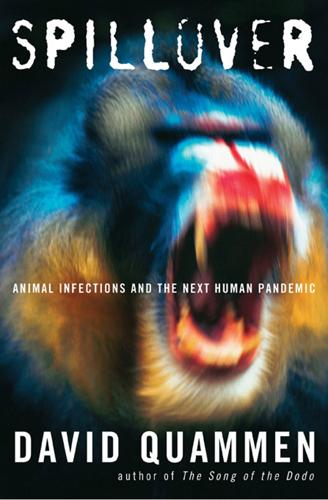
Spillover: Animal Infections and the Next Human Pandemic
by
David Quammen
Published 30 Sep 2012
Early molecular research suggested that P. falciparum shares a close common ancestor with two different kinds of avian plasmodia, and that the parasite must therefore have crossed into humans from birds. A corollary to that idea, based on sensible deduction but not much evidence, is that the transfer probably happened just five or six thousand years ago, coincident with the invention of agriculture, which allowed for sedentary settlement—crop fields and villages—constituting the first sizable and dense aggregations of humans. Such gatherings of people would have been necessary to sustain the new infection, because malaria (like measles, but for different reasons) has a critical community size and tends to die out locally if the hosts are too few.
…
Berryman was alluding, of course, to the rate and the magnitude of human population growth, especially within the last couple centuries. He knew he was being provocative. But the numbers support him. At the time Berryman wrote, in 1987, the world’s human population stood at 5 billion. We had multiplied by a factor of about 333 since the invention of agriculture. We had increased by a factor of 14 since just after the Black Death, by a factor of 5 since the birth of Charles Darwin, and by doubling within the lifetime of Alan Berryman himself. That growth curve, on a coordinate graph, looks like the southwest face of El Capitan. Another way to comprehend it is this: From the time of our beginning as a species (about 200,000 years ago) until the year 1804, human population rose to a billion; between 1804 and 1927, it rose by another billion; we reached 3 billion in 1960; and each net addition of a billion people, since then, has taken only about thirteen years.
…
O., 172 Lobeke, Cameroon, 426 Lobeke National Park, Cameroon, 435, 438 Loeffler, Friedrich, 266 logging, 67, 433–35, 439 London, 1858 cholera outbreak in, 131 Lonsdorf, Elizabeth, 474–75 Los Angeles, Calif., early AIDS cases in, 385–86, 388, 389, 489 Lossi Gorilla Sanctuary, 63, 64, 65, 91, 120, 124 Lubumbashi, DRC, 483 Luby, Stephen, 328–33, 375 Luebo, DRC, 370–73 Lumumba, Patrice, 484 Luzon, Philippines, SARS in, 167 Lymantria dispar (gypsy moths), 496, 499, 500–501, 520–21 Lyme, Conn., 212, 241 Lyme disease, 21, 23, 238–59, 511 biogeography of, 256–59 biological diversity and risk of, 255–56 “chronic,” 238–39, 259 and deer population levels, 246–47 deer ticks as vector for, 212–13, 241–42, 255 as ecosystem, 247, 251, 253–54 prehistory of, 239–42 as vector-borne disease, 238 Lyme disease (continued) and white-footed mouse population levels, 252, 253–54 Lyme Disease: The Ecology of a Complex System (Ostfeld), 246, 257 lymphocytes, 488 depleted levels of, 385, 386–87, 474–75, 477 see also T cells lyssaviruses, 351 Macacine herpesvirus 1, see herpes B macaques: in AIDS research, 274 bonnet, 149 herpes B in, 272–79, 313 at Hindu and Buddhist temples, 24, 276–77 long-tailed (Macaca fascicularis), 77–78, 149, 157, 160, 162, 163, 276, 277–78 malaria in, 148–53, 156, 157–58, 160 pig-tailed, 149, 161, 162 in polio research, 272–74 precautionary slaughter of, 275–76, 286 Reston virus in, 8, 77–78, 861 rhesus (M. mulatta), 149, 162, 185, 401, 414 SFV in, 24, 287–89 SIV in, 395 SV40 in, 414 at Sylhet majars, 280–85 MacArthur, Robert, 302–3 Macau, China, 170 MacDonald, George, 145–48, 172, 303, 518 Machupo virus, 24, 38–39, 69–70, 270, 307, 346 Mackay, Australia, 28, 29–30, 45 Madagascar, 515 mad cow disease, 23–24 Madras, India, 128 Makokou General Hospital, Gabon, 57 Makovetskaya, Nadezhda Alekseevna, 99–100 Malacosoma, M. californicum (western tent caterpillar), 493–96 M. disstria (forest tent caterpillar), 493–96, 520 malaria, 127–28, 237, 381, 478 Anopheles mosquito as vector of, 135–36, 138 attempted eradication of, 133–34, 145–46, 147, 517–18 cause of, see Plasmodium critical community size of, 138 falciparum (malignant), 136–41, 418 and invention of agriculture, 137–38, 139 in nonhuman species, 135 P. knowlesi, 149–53, 156–64, 381, 480, 514, 518 reservoir hosts of, 161–62 simian, 148–53 as supposedly nonzoonotic, 135 as zoonotic disease, 42, 140, 152, 158, 160 malaria prophylaxis, 361–62 Malaya, University of, 315–16, 317 Malaysia: malaria in, 151–54, 156–63 mass culling of pigs in, 320 Nipah virus in, 21, 44, 314–25, 331, 334, 367 Mambele, Cameroon, 426, 437–38 Mambili River, 63, 64, 68, 89, 122 “Manchester sailor,” 407–8 mandrills, SIV in, 114 mangabeys: red-capped, 464, 465 sooty (Cercocebus atys), 399–401, 404, 406, 413 Maramagambo Forest, 357–58, 361 Marburg virus, 21, 22, 39, 40, 70, 92, 93, 116, 268, 307, 489 bats as reservoirs of, 313, 351–65, 370, 372 Martin, Lillian, 212, 214 Marx, Preston, 480 mass action principle of epidemics, 132 MassTag PCR, 514 mathematics, in infectious disease research, 129–35, 141–48 May, Robert M., 302–6, 518 Mayibout 2, Gabon, 53–54, 56–57, 60, 63, 72, 73, 80–81, 112–13, 114, 117, 443 Mbah, Neville, 432, 439–40, 450 Mbomo, Republic of the Congo, 89–91, 92, 118, 122–24 M’Both, Thony, 56–57, 112–13, 114 McCormack, Joseph, 29 McCoy, George W., 215 McKendrick, Anderson G., 141–44, 146, 236, 303, 367, 518 McNeill, William H., 41, 296 measles, 19, 67, 68, 88, 129, 264, 270, 349, 381 immunity to, 129–30 as nonzoonotic, 130 reservoir hosts of, 313 Medawar, Peter, 268, 271 Médecins Sans Frontières, 89 Megatransect (biological survey), 54, 59–60 Mékouka, Gabon, 87–88 Melaka virus, 314 Menangle virus, 314, 367 meningitis, 28, 240 merozoites, 136, 138 metapopulations, 367–68 Metropole Hotel, Hong Kong, 174–75, 177, 193, 206 Mexican free-tailed bats, 350 Mexico, 486 Miami, Fla., early AIDS cases in, 386–87, 389 Microbiological Research Establishment (Porton Down), 97–98 Millbrook, N.Y., 247–48, 252, 255, 257 Ministry of Health, DRC, 370, 417 Ministry of Health, Malaysia, 317 Ministry of Health, Zaire, 73 Minkébé forest, 56, 59, 60, 91, 111–12, 120 Moba Bai complex, 64–68, 89, 91, 120, 122, 466 Mobutu Sese Seko, 418, 484–85 Mok, Esther, 175–77, 180–81 molecular biology, 517 molecular phylogenetics, 137, 422, 463, 488 Moloundou, Cameroon, 439, 455 Mombo Mounene 2, DRC, 371 Mongo people, 139 monkeypox, 21, 22–23, 40, 71–72, 313, 499 Montagnier, Luc, 390–91, 392–93, 394, 397–98 Montana, Q fever in, 220–21, 231 Montgomery, Joel M., 327 Morbidity and Mortality Weekly Report, 386, 390, 486 morbilliviruses, 19, 130 Morse, Stephen S., 24 mosquitoes: as disease vectors, 23, 43, 128–29, 135, 263, 266, 314–15, 346 see also Anopheles mosquitoes mountain gorillas, 67, 68, 357, 360 Moyen-Congo, see Congo, Republic of the Mozambique, 483 “Mr.
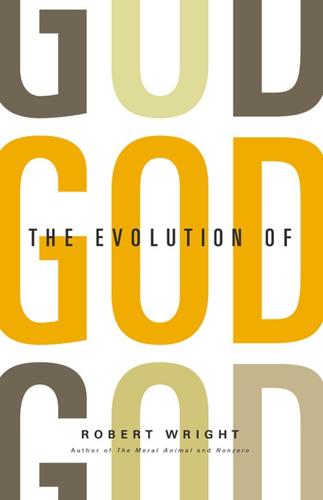
The Evolution of God
by
Robert Wright
Published 8 Jun 2009
No one any longer believes, as some nineteenth-century anthropologists did, that observed hunter-gatherers are crystalline examples of religion at its moment of origin tens of thousands of years ago. But they’re the best clues we’ll ever have to generic religious beliefs circa 12,000 BCE, before the invention of agriculture. Cave paintings are attractive, but they don’t talk. Hunter-Gatherer Gods The Klamath, a hunter-gatherer people in what is now Oregon, talked. And, fortunately for us, they talked to someone who understood them more clearly than visitors often understand indigenous peoples: Albert Samuel Gatschet, a pioneering linguist who in the 1870s compiled a dictionary and grammar of the Klamath language.
…
Still, Marx was onto something: since social structure changes over time, and religion is at least in part a reflection of social structure, the virtues of religion may change in a patterned way as cultural evolution changes that structure. The transformation in social structure that carried religion beyond the age of shamans is the subject of the next chapter. With the invention of agriculture, the virtues of religion, and the character of gods, would start to change. Chapter Three Religion in the Age of Chiefdoms When Captain James Cook visited Polynesia in the 1760s and 1770s, there were aspects of the culture that offended him. Human sacrifice, for example—“a shocking waste of the human race,” he wrote in his journal.
…
For that matter, it gave us nonmodern religion. Whenever we look at a “primitive” religion, we are looking at a religion that has been evolving culturally for a long time. Though observed hunter-gatherer religions give clues about what the average religion was like 12,000 years ago, before the invention of agriculture, none of them much resembles religion in its literally primitive phase, the time (whenever that was) when religious beliefs and practices emerged. Rather, what are called “primitive” religions are bodies of belief and practice that have been evolving—culturally—over tens or even hundreds of millennia.

Surviving AI: The Promise and Peril of Artificial Intelligence
by
Calum Chace
Published 28 Jul 2015
It will mark the end of our long reign as the only species on this planet capable of abstract thought, sophisticated communication, and scientific endeavour. In a very important sense, it will mean that we are no longer alone in this huge, dark universe. As British journalist Andrew Marr said in the conclusion of his epic 2013 TV documentary series, History of the World, “it would be the greatest achievement of humanity since the invention of agriculture.” But it is the arrival of superintelligence – not AGI – which would be, in Stephen Hawking’s famous words, “the best or worst thing ever to happen to humanity.” An AGI with human levels of cognitive ability (if perhaps rather better at mental arithmetic) would be a technological marvel, and a harbinger of things to come.
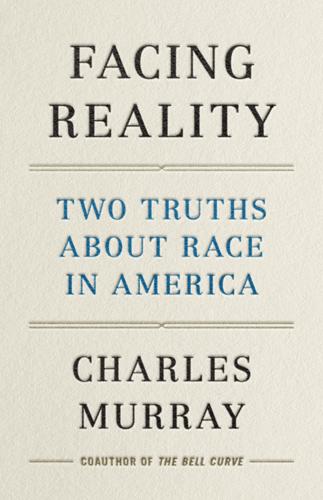
Facing Reality: Two Truths About Race in America
by
Charles Murray
Published 14 Jun 2021
Those traits had great survival value for human beings throughout millions of years of evolution. People who were trusting of outsiders were less likely to pass on their genes than people who were suspicious of them. People who were loyal to their tribe were more likely to pass on their genes than people who stood apart. The invention of agriculture and the consequent rise of complex societies exposed another aspect of human nature that had enjoyed less scope for expression in hunter-gatherer bands: acquisitiveness, whether of money, status, or power. Whatever its evolutionary roots may be, the empirical consistency of human acquisitiveness over the eons is impressive.
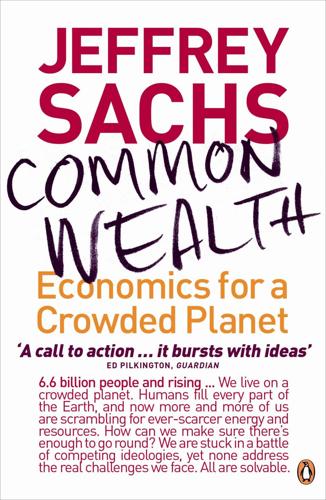
Common Wealth: Economics for a Crowded Planet
by
Jeffrey Sachs
Published 1 Jan 2008
Now is the time to grasp exactly what is happening. The evidence is compelling: we need to redesign our social and economic policies before we wreck this planet. At stake is humankind’s one shot at a permanently bright future. Modern humanity was born, so to speak, about ten thousand years ago with the invention of agriculture and the villages and political hierarchies that soon followed. Up to that point our species had perfected hunter technology enough to wipe out a large part of Earth’s largest mammals and birds—the megafauna—but it left most of the vegetated land surface and all of the oceans intact. The economic history that followed can be summarized very succinctly as follows: people used every means they could devise to convert the resources of Earth into wealth.
…
There is evidence that humans, and even protohumans, used fire to alter their landscapes in order to convert forests to grasslands and to facilitate hunting. These earliest steps of our species foretold the pattern that brings us to the ecological challenge of the twenty-first century. The decisive breakthrough in human populations came not with fire, but with the invention of agriculture, around ten thousand years ago. The shift to agriculture represented a qualitative change in the natural order, one whose consequences are still being played out. In an agricultural system, the land is cleared of natural communities of plants and animals so that the solar energy can be appropriated by human beings in a more direct manner.
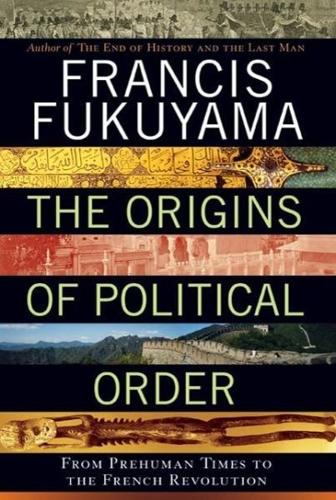
The Origins of Political Order: From Prehuman Times to the French Revolution
by
Francis Fukuyama
Published 11 Apr 2011
While it might seem logical that new food technologies drove higher population densities, Ester Boserup has argued that the causality went the other way around.24 Either way, the social impact was enormous. Depending on climatic conditions, hunter-gatherer societies have a population density from 0.1 to 1 person per square kilometer, while the invention of agriculture permits densities to rise to 40–60 per square kilometer.25 Human beings were now in contact with one another on a much broader scale, and this required a very different form of social organization. The terms “tribes,” “clans,” “kindreds,” and “lineages” are all used to describe the next stage of social organization above the band.
…
The Hundred and the Thingman disappeared as juridical institutions, but survived, as we will see, as instruments of local government that would eventually emerge as units of modern democratic representation. WARFARE AND MILITARY ORGANIZATION I have thus far theorized little about why human beings made the transition from band-level to tribal societies, except to say that it was historically associated with the increased productivity made possible by the invention of agriculture. Agriculture made possible higher population densities, which in turn created a need for organizing societies on a larger scale. Agriculture also created the need for private property, which then became heavily intertwined with complex kinship structures, as we have seen. But there is another reason that human beings transitioned to tribal societies: the problem of warfare.
…
But economic life in Han Dynasty China resembled the world described by Thomas Malthus in his Essay on the Principle of Population much more than the world that has existed since the beginning of the Industrial Revolution of the last two hundred years.6 Today, we expect increases in labor productivity (output per person) as the result of technological innovation and change. But before 1800, productivity gains were much more episodic. The invention of agriculture, the use of irrigation, the invention of the printing press, gunpowder, and long-distance sailing ships all led to productivity gains,7 but between them there were prolonged periods when population growth increased and per capita income fell. Many agrarian societies were operating at the frontier of their technological production possibilities, where further investment would not yield higher output.
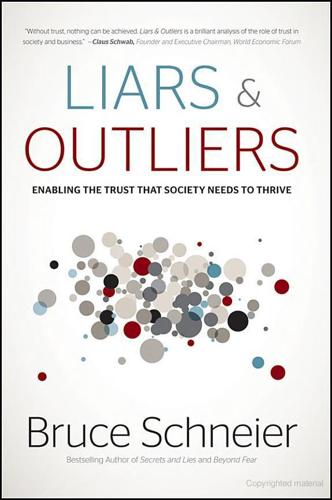
Liars and Outliers: How Security Holds Society Together
by
Bruce Schneier
Published 14 Feb 2012
Stage three is much more recent; around 500,000 or 400,000 years ago, humans became dependent on group hunting, and started exhibiting long-term care for the injured and the infirm. Stage four occurred in modern humans starting 120,000 years ago, when compassion extended to strangers, animals, and sometimes even objects: religious objects, antiques, family heirlooms, etc. It probably didn't extend much past groups bigger than the Dunbar number of 150 until the invention of agriculture, about 10,000 years ago—I guess that's a fifth stage. Still, that doesn't tell us how or why it eventually did. There are two basic types of non-kin cooperation. The first is mutualism.10 In some species, unrelated individuals cooperate because together they can perform tasks they couldn't do by themselves.
…
compassion extended Penny Spikins, Holly Rutherford, and Andy Needham (2010), “From Homininity to Humanity: Compassion from the Earliest Archaic to Modern Humans,” Time and Mind, 3:303–25. Priyali Rajagopal and Nicole Votolato Montgomery (2011), “I Imagine, I Experience, I Like: The False Experience Effect,” The Journal of Consumer Research, 38:578–94. invention of agriculture Robert Boyd and Peter Richerson (2004), Not by Genes Alone: How Culture Transformed Human Evolution, University of Chicago Press. Unrelated elephants Joshua M. Plotnik, Richard Lair, Wirot Suphachoksahakun, and Frans de Waal (2011), “Elephants Know When They Need a Helping Trunk in a Cooperative Task,” Proceedings of the National Academy of Sciences of the United States of America, published online before print.

The Red Queen: Sex and the Evolution of Human Nature
by
Matt Ridley
Published 14 Aug 1993
A lucky hunter kills more than he can eat, so he loses little by sharing it with his companions; he gains a lot, for next time, when he is unlucky, the favour will be repaid by those with whom he shared the meat. Trading favours in this way was the ancient ancestor of the monetary economy. But because meat could not be stored and because luck did not last, accumulation of wealth was not possible in hunter-gatherer societies.30 With the invention of agriculture, the opportunity for some males to be polygamous arrived with a vengeance. Farming opened the way for one man to grow much more powerful than his peers by accumulating a surplus of food, whether grain or domestic animals, with which to buy the labour of other men. The labour of other men allowed him to increase his surplus still further.
…
The best they can hope for now is a good-looking younger mistress and a devoted wife who is traded in every decade or so. We’re back to square one. This chapter has kept its focus resolutely on the male. In doing so it may seem to have trampled on the rights of women by ignoring them and their wishes. But then so did men for many generations after the invention of agriculture. Before agriculture and since democracy, such chauvinism was impossible; the mating system of mankind, like that of other animals was a compromise between the strategies of males and females. And it is a curious truth that the monogamous marriage bond survived right through despotic Babylon, lascivious Greece, promiscuous Rome and adulterous Christendom to emerge as the core of the family in the industrial age.
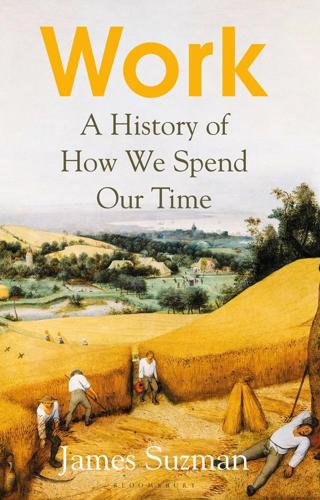
Work: A History of How We Spend Our Time
by
James Suzman
Published 2 Sep 2020
It was also the first to include sequences of material from both Neanderthal and Homo sapiens populations. But most importantly of all it was the first to propose that the area around Mount Carmel was home to a distinctive regional culture around 12,000 years ago, and that that culture was responsible for the invention of agriculture. No one in the Archaeology Department at Cambridge University now remembers whether or not Dorothy Garrod, who held a professorship there from 1939 through to her retirement in 1952, liked to end her days with a sherry or a gin and tonic in the senior fellows common room at Newnham College where she lived.
…
This being so, while automation and AI have made it possible for us to embrace a profoundly different future, it is unlikely that it will be the catalyst that causes the dramatic changes in ‘social customs and economic practices’ that Keynes envisaged. Far more likely catalysts take the form of a rapidly changing climate, like that which spurred the invention of agriculture; anger ignited by systematic inequalities like those that stirred the Russian revolution; or perhaps even a viral pandemic that exposes the obsolescence of our economic institutions and working culture, causing us to ask what jobs are truly valuable and question why we are content to let our markets reward those in often pointless or parasitic roles so much more than those we recognise as essential.

In Praise of Idleness and Other Essays
by
Bertrand Russell
Published 1 Jan 1935
And it must not be supposed that the effect of these novelties upon human life has developed to anything like its full extent: things move more quickly now than they did in past ages, but they do not move so quickly as all that. The last event in human development comparable in importance to the growth of industrialism was the invention of agriculture, and agriculture took many thousands of years to spread over the earth’s surface, carrying with it, as it spread, a system of ideas and a way of life. The agricultural way of life has not even yet wholly conquered the aristocracies of the world, which, with characteristic conservatism, have remained largely in the hunting stage, as is evidenced by our game laws.
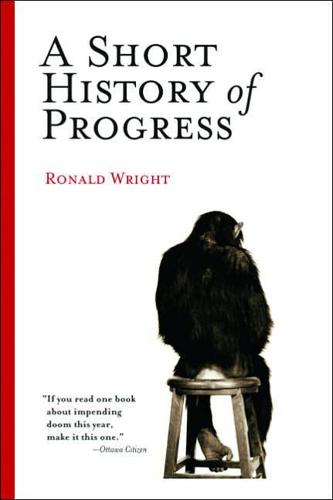
A Short History of Progress
by
Ronald Wright
Published 2 Jan 2004
These usually act together.1 The Sumerians’ irrigation was certainly a runaway train, a disastrous course from which they could not deviate; the rulers’ failure to tackle the problem qualifies them as dinosaurs, and the civilization’s swift and irreparable fall shows it to have been a house of cards. Much the same can be said of the other failures. We are faced by something deeper than mistakes at any particular time or place. The invention of agriculture is itself a runaway train, leading to vastly expanded populations but seldom solving the food problem because of two inevitable (or nearly inevitable) consequences. The first is biological: the population grows until it hits the bounds of the food supply. The second is social: all civilizations become hierarchical; the upward concentration of wealth ensures that there can never be enough to go around.

The Rational Optimist: How Prosperity Evolves
by
Matt Ridley
Published 17 May 2010
But they were exchanging harder in this region than anywhere else, and it is a reasonable guess that one of the pressures to invent agriculture was to feed and profit from wealthy traders – to generate a surplus that could be exchanged for obsidian, shells or other more perishable goods. Trade came first. In the 1960s, Jane Jacobs suggested in her book The Economy of Cities that agriculture was invented to feed the first cities, rather than cities being made possible by the invention of agriculture. This goes too far, and archaeologists have discredited the idea of urban centres preceding the first farms. The largest permanent settlements of hunter-gatherers cannot be described as urban even among the fishermen of the Pacific coast of North America. None the less, there was a germ of truth in her idea: the first farmers were already enthusiastic traders breaking free of subsistence through exchange, and farming was just another expression of trade.
…
Or, in the words of two theorists: ‘The denser societies made possible by agriculture can realize considerable returns to better exploitation of the potential of co-operation, co-ordination and the division of labour.’ Hence, the invention of metal smelting was an almost inevitable consequence of the invention of agriculture (though some very early mining of pure copper-metal deposits around Lake Superior was apparently done by hunter-gatherers, perhaps supplying the almost agricultural salmon ranchers of the Pacific coast). Copper was produced throughout the Alps, where some of the best ores are to be found, but it was exported to the rest of Europe for several thousand years after Oetzi’s death, only later being displaced by copper mined in Cyprus.

Good Calories, Bad Calories: Challenging the Conventional Wisdom on Diet, Weight Control, and Disease
by
Gary Taubes
Published 25 Sep 2007
The evidence for those assumptions will always depend as much on the observers’ preconceptions and belief system as on any objective reality. By defining “biological normality” as “the conditions to which presumably we are genetically adapted,” Rose was saying that the healthiest diet is (presumably) the diet we evolved to eat. That is the diet we consumed prior to the invention of agriculture, during the two million years of the Paleolithic era—99 percent of evolutionary history—when our ancestors were hunters and gatherers. “There has been no time for significant further genetic adaptation,” as the nutritionists Nevin Scrimshaw of MIT and William Dietz of the Centers for Disease Control noted in 1995.
…
But it depended now on an assumption about human evolution that was contradicted by the anthropologic evidence itself—that human history was dominated by what Jared Diamond had called the “conditions of unpredictably alternating feast and famine that characterized the traditional human lifestyle.” Reasonable as this may seem, we have no evidence that food was ever any harder to come by for humans than for any other organisms on the planet, at least not until our ancestors began radically reshaping their environment ten thousand years ago, with the invention of agriculture. Both the anthropological remains and the eyewitness testimony of early European explorers suggest that much of the planet, prior to the last century or two, was a “paradise for hunting,” in the words of the Emory University anthropologist Melvin Konner and his collaborators, with a diversity of game, both large and small, “present in almost unimaginable numbers.”*72 Though famines have certainly been documented among hunter-gatherer populations more recently, there’s little reason to believe that this happened prior to the industrial revolution.
…
This makes the science even more complicated than it already is, but these are serious considerations that should be taken into account when discussing a healthy diet. There is no such ambiguity, however, on the subject of carbohydrates. The most dramatic alterations in human diets in the past two million years, unequivocally, are (1) the transition from carbohydrate-poor to carbohydrate-rich diets that came with the invention of agriculture—the addition of grains and easily digestible starches to the diets of hunter-gatherers; (2) the increasing refinement of those carbohydrates over the past few hundred years; and (3) the dramatic increases in fructose consumption that came as the per-capita consumption of sugars—sucrose and now high-fructose corn syrup—increased from less than ten or twenty pounds a year in the mid-eighteenth century to the nearly 150 pounds it is today.
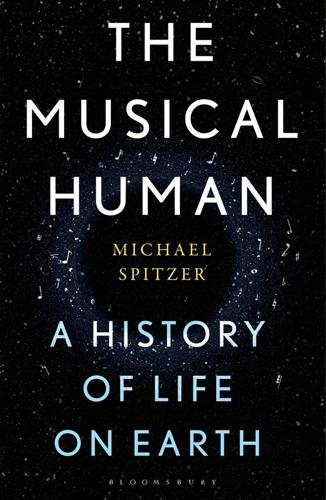
The Musical Human: A History of Life on Earth
by
Michael Spitzer
Published 31 Mar 2021
And it is extraordinary to consider that the Australian Aboriginal people, geographically isolated for 60,000 years, met Captain Cook in 1778: this is one second to midnight in their enormously long historical clock. Mapping contemporary hunter-gatherer music over the prehistorical timeline involves speculation of a rather higher order, however. From the Ice Age to the invention of agriculture between 12,000 and 9,000 years ago there was a gradual climatic warming, interrupted by a cold snap (12,900–9700 bc) called the Younger Dryas. There was also the diffusion of early humans, radiating from central Africa to Asia and Australia, Europe, and then across the Bering Strait to Alaska, eventually migrating south through the Americas.
…
It is as if the mesh of trails has evolved into a more abstract web of culture. This level of abstraction might have been forced on sapiens by the Ice Age, and it may mark an important advance towards the social complexity entailed by Neolithic sedentary culture, and the cognitive revolution associated with the invention of agriculture. We must not forget that the Inuit are a modern culture. Drums are, perhaps surprisingly, a modern instrument: the technology to bake ceramics, or to stretch a skin over a wooden frame, is more recent than making string instruments, probably being developed around 7000 bc. The earliest known image of a frame drum – played by a shaman who is flying like a bird – survives in a Siberian cave painting, dated 2,000 years bc.59 The Ice Age Orpingalik might have dampened reindeer hide with urine and shrink-wrapped it over rolled-up tree bark by drying it on his fire.
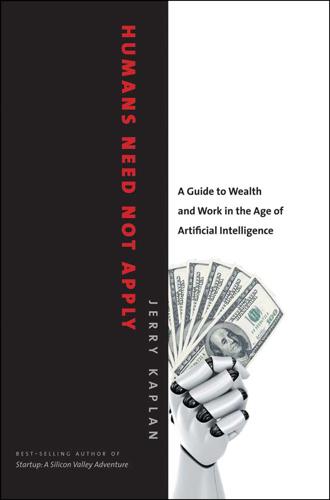
Humans Need Not Apply: A Guide to Wealth and Work in the Age of Artificial Intelligence
by
Jerry Kaplan
Published 3 Aug 2015
For an example of labor market transformation that we have weathered successfully, consider agriculture. As recently as the early 1800s, farms employed a remarkable 80 percent of U.S. workers.1Consider what this means. Producing food was by far the dominant thing people did for a living, and no doubt this pattern had been typical since the invention of agriculture about five thousand years ago. But by 1900, that figure had dropped in half, to 40 percent, and today it’s only 1.5 percent, including unpaid family and undocumented workers.2 Basically, we managed to automate nearly everyone out of a job, but instead of causing widespread unemployment, we freed people up for a host of other productive and wealth-producing activities.
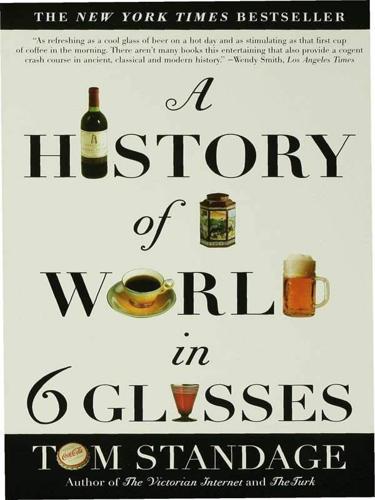
A History of the World in 6 Glasses
by
Tom Standage
Published 1 Jan 2005
The story of tea is the story of imperialism, industrialization, and world domination, one cup at a time. The Rise of Tea Culture According to Chinese tradition, the first cup of tea was brewed by the emperor Shen Nung, whose reign is traditionally dated to 2737-2697 BCE. He was the second of China's legendary emperors and was credited with the inventions of agriculture and the plow, along with the discovery of medicinal herbs. (Similarly, his predecessor, the first emperor, is said to have discovered fire, cooking, and music.) Legend has it that Shen Nung was boiling some water to drink, using some branches from a wild tea bush to fuel his fire, when a gust of wind carried some of the plant's leaves into his pot.

Jaws
by
Sandra Kahn,Paul R. Ehrlich
Published 15 Jan 2018
That DNA, interacting with that environment, resulted in ample airways. Since the agricultural and then the industrial revolutions, however, that eating-resting environmental pattern has been dramatically altered. Societies have culturally adapted to changes like the easy availability of softer weaning foods after the invention of agriculture and the comfort and safety of moving “indoors” once perpetual motion in search of food was no longer required. Does this mean that “environment” is more important than “genes”? Not really. To simplify thinking about gene–environment interactions, one can imagine that a person is like the area of a rectangle—a product of the width (genetic plans) and the length (environment in which those plans are executed).
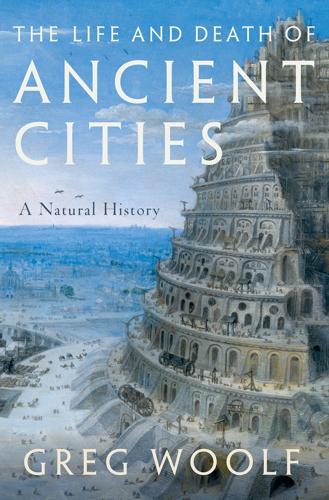
The Life and Death of Ancient Cities: A Natural History
by
Greg Woolf
Published 14 May 2020
The first human settlers of New Zealand or North America seem to have gorged on the prey species they found there, but once the megafauna were gone or drastically reduced in numbers, human populations did not collapse. They moved on to other foods. Early in the Holocene a one thousand-year-long cold snap, known as the Younger Dryas, may have provided the stimulus for one of the first inventions of agriculture. It happened in the Near East. From preserved plant and animal remains it is possible to reconstruct changes in the environment of a broad sweep of territory between the Mediterranean and the desert interior, from the modern borders of Egypt through Israel and Jordan to northern Syria. Largely arid today, between 13,000 and 8500 b.c.e. this was a landscape of open woodland bordering on upland steppe.
…
They organized themselves to work together, as they had worked together as hunters and as foragers. Other species faced with environmental degradation might have retreated to better territory, or simply collapsed in number. Our ancestors could do better than that. They stayed and farmed. The Natufian invention of agriculture is a very local story. Agriculture was invented many times around the globe, in radically different ecologies. Each local story must have been different, but there is a general pattern. Moves from intensive foraging to planting and farming took independently on at least a dozen occasions (that we know about so far).
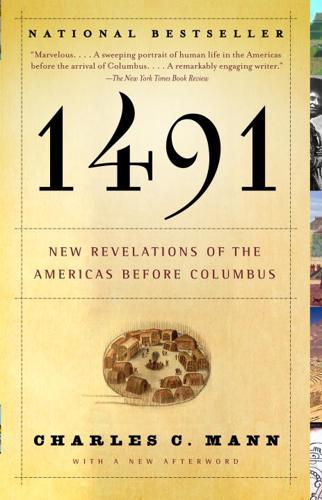
1491
by
Charles C. Mann
Published 8 Aug 2005
If the MFAC hypothesis was true, early civilization in Peru was in one major respect strikingly unlike early civilization in Mesopotamia, Egypt, India, and China. Farming, the cornerstone of the complex societies in the rest of the world, was in Peru an afterthought. (In Chapter 1, I called Peru the site of an independent Neolithic Revolution, which I defined, following archaeological practice, as beginning with the invention of agriculture. If the MFAC is correct, the definition will have to be changed.) The MFAC hypothesis was radical, its supporters conceded, but the supporting evidence could not be dismissed. Bone analyses show that late-Pleistocene coastal foragers “got 90 percent of their protein from the sea—anchovies, sardines, shellfish, and so on,” said Susan deFrance, an archaeologist at the University of Florida.
…
Thus on the next page Current et al. describe Indians both as establishing some of “the world’s most dazzling cultures” and “lack[ing] some of mankind’s most basic tools and technologies” (2)—the latter state assuming, ethnocentrically, that European technologies are “basic” whereas indigenous technologies are inessential. See Chaps. 2 and 3. New perspectives and techniques: Crosby ed. 1994 (“faint smudges,” 7). “replaced”: Vale 1998:231. Growth of Bering Strait theory and fight over Chilean site: See Chap. 5. Deloria index entries: Deloria 1995:284. Invention of agriculture: See, e.g., Lev-Yadun, Gopher, and Abbo 2000. Neolithic Revolution: I am simplifying here. Sumerian villages were growing wheat and barley by about 6000 B.C. Around 4000 B.C. the villages became hierarchically organized towns or cities. Early forms of writing date to at least 3000 B.C.

Bourgeois Dignity: Why Economics Can't Explain the Modern World
by
Deirdre N. McCloskey
Published 15 Nov 2011
Yet such novelty-rich revolutions had happened occasionally before, in fifth-century Athens or twelfth-century Song China or fifteenth-century Italy.15 What differed this last time was the follow-on, the explosive Great Enrichment of ordinary people, arising from the loosening a Great Chain of Being that had trammeled most humans since the invention of agriculture, keeping men in hand-and-back work and women in arranged marriages. After the loosening and the consequent Enrichment, the son of a freight conductor could became a professor of government at Harvard, the son of a tailor a professor of law at Yale, the daughter of a conservative Southern lawyer a liberal professor of law, philosophy, and classics at the University of Chicago.
…
But the judgment about whether the System has worked for ordinary people, and why or why not, is too important to leave to personal fancy or to prideful skepticism or to a political identity adopted in late adolescence, never to be reconsidered in the light of new evidence or mature understanding, reaffirmed daily by the particular group of shouters and sneerers we tune into on cable TV. If we are to help the remaining poor of the world, as ethically speaking we should, the political judgment needs to be made soberly and scientifically. The Great Enrichment is the most important secular event since the invention of agriculture. It has restarted history. It will end poverty, as for a good part of humankind it already has. Surprisingly, though, economists and historians from left or right or center can’t explain it. Perhaps their sciences and their politics need revision. * Our great-great-great-great-great-great-grandparents were very poor, which had in turn been the lot of their ancestors since time out of mind.
…
Thus it had been, in 1800, during the two thousand or so centuries since the mitochondrial Eve (and about the same span, as has recently been discovered, since her good friend the Y-chromosome Adam19). Or during the thousand or so centuries since the invention of full language. Or during the hundred or so centuries since the invention of agriculture. Or during the eight or so centuries since commerce had revived in the West. Or during the three or so centuries since Europeans had ventured by sea to Africa and India and the New World. Pick whatever period down to 1800 you want. For a long, long time nothing much happened to the economic misery of the average Jill.
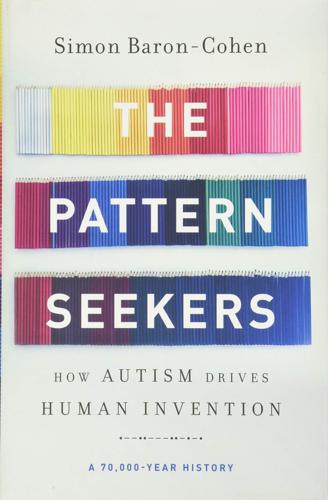
The Pattern Seekers: How Autism Drives Human Invention
by
Simon Baron-Cohen
Published 14 Aug 2020
Others may learn to master a musical instrument, a craft, or a sport because these too benefit from a strong drive to systemize. The diagram in figure 2.1 looks very abstract, but figure 2.2 shows how the Systemizing Mechanism can be instantiated in a concrete example. Figure 2.2. How systemizing led to the invention of agriculture The basics of systemizing are evident in every young child, and in all of us as we ask ourselves questions and try to figure out how things work. It’s evident in watching a young child exploring an object, as they discover what can be done with it or what it can do. And that playful curiosity—driven by wanting to understand a system or wanting to solve a challenge—is everyday systemizing at work.
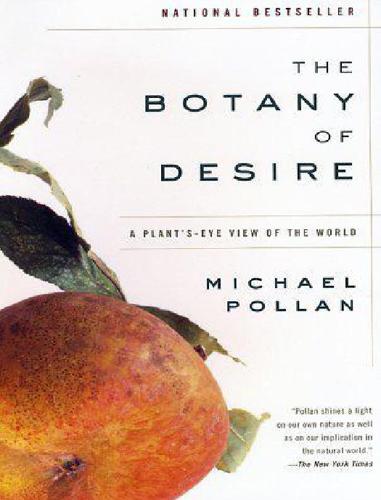
The botany of desire: a plant's-eye view of the world
by
Michael Pollan
Published 27 May 2002
Plants began evolving burrs that attach to animal fur like Velcro, flowers that seduce honeybees in order to powder their thighs with pollen, and acorns that squirrels obligingly taxi from one forest to another, bury, and then, just often enough, forget to eat. Even evolution evolves. About ten thousand years ago the world witnessed a second flowering of plant diversity that we would come to call, somewhat self-centeredly, “the invention of agriculture.” A group of angiosperms refined their basic put-the-animals-to-work strategy to take advantage of one particular animal that had evolved not only to move freely around the earth, but to think and trade complicated thoughts. These plants hit on a remarkably clever strategy: getting us to move and think for them.
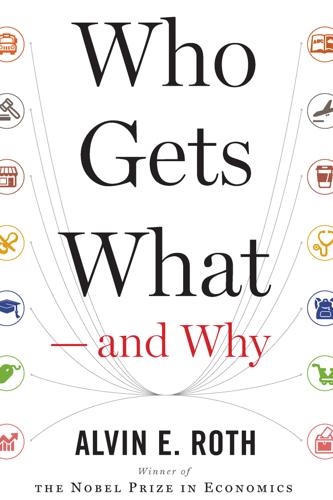
Who Gets What — and Why: The New Economics of Matchmaking and Market Design
by
Alvin E. Roth
Published 1 Jun 2015
The key to such a clearinghouse is making it safe for people to state their preferences honestly. So before I start to describe the clearinghouses we’ve built, let’s talk more about safety. 7 Too Risky: Trust, Safety, and Simplicity MAKING MARKETS SAFE is one of the oldest problems of market design, going back to well before the invention of agriculture, when hunters traded the ax heads and arrowheads that archaeologists today find thousands of miles from where they were made. More recently, one of the responsibilities of kings in medieval Europe was to provide safe passage to and from markets and fairs. For healthy commerce, buyers and sellers needed to be able to participate in these markets safely, without being waylaid and robbed (or worse) by highwaymen.

The Autonomous Revolution: Reclaiming the Future We’ve Sold to Machines
by
William Davidow
and
Michael Malone
Published 18 Feb 2020
Two belief systems that emerged during this epoch, Christianity and Islam, were part of widespread social phase change. They transformed the way large portions of the world were governed. The new tools they used to control behavior were ideas of redemption and eternal life as opposed to force. Printing was the first major general-purpose technology to emerge after the invention of agriculture, and it powered the first modern communications revolution. The printing press and movable type, invented by Johannes Gutenberg around 1440,19 made mass communication possible, democratizing the spread of information. Until Gutenberg, the Catholic Church had produced a large proportion of books.
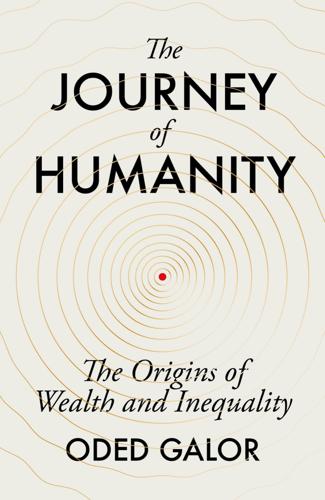
The Journey of Humanity: The Origins of Wealth and Inequality
by
Oded Galor
Published 22 Mar 2022
Mathieson, Iain, Iosif Lazaridis, Nadin Rohland, Swapan Mallick, Nick Patterson, Songül Alpaslan Roodenberg, Eadaoin Harney et al., ‘Genome-Wide Patterns of Selection in 230 Ancient Eurasians’, Nature 528, no. 7583 (2015): 499–503. Matranga, Andrea, ‘The Ant and the Grasshopper: Seasonality and the Invention of Agriculture’ (2017). Matthews, Robert Charles Oliver, Charles Hilliard Feinstein and John C. Odling-Smee, British Economic Growth 1856–1973: The post-war period in historical perspective, Oxford University Press, 1982. Mayshar, Joram, Omer Moav and Zvika Neeman, ‘Geography, Transparency, and Institutions’, American Political Science Review 111, no. 3 (2017): 622–36.
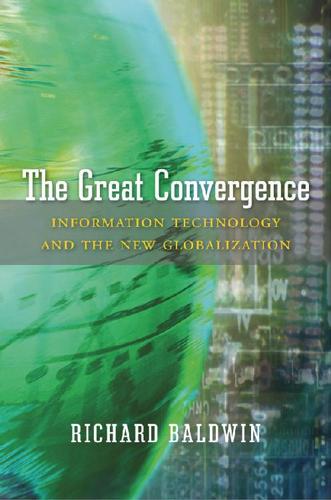
The Great Convergence: Information Technology and the New Globalization
by
Richard Baldwin
Published 14 Nov 2016
For seventy-five millennia or so, this consumption-moving-to-production happened only in Africa. This chapter first relates the story of how humans hunted and gathered their way across the globe in Phase One. It then turns to explaining how the nature of globalization changed radically when a large share of humans got “stuck” in certain locales after the invention of agriculture. Phase One: Humanizing the Globe The detailed timing of modern humans moving beyond Africa is not fully understood, but it was certainly not linear. Given the close ties between climate, food, and population—and the vast climate change going on during this period (Figure 4)—humanity’s dispersion quite naturally waxed and waned.
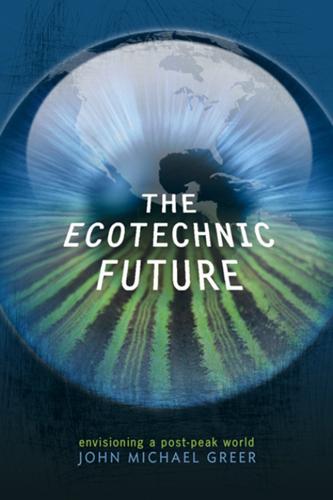
The Ecotechnic Future: Envisioning a Post-Peak World
by
John Michael Greer
Published 30 Sep 2009
Jared Diamond, Collapse: How Societies Choose to Fail or Succeed, Penguin, 2005, is the classic ecological analysis. 3. Odum, Fundamentals of Ecology, provides the model of succession on which this section is based. 4. This way of approaching the history of agriculture differs sharply, of course, from the version common in alternative circles these days, which interprets the invention of agriculture as a form of “original sin” — sometimes quite literally; see, for example, Daniel Quinn, Ishmael, Bantam, 1992. See Colin Tudge, Neanderthals, Bandits, and Farmers: The Origins of Agriculture, Yale University Press, 1998, for a survey of recent (and less polemical) scholarship on the origins of agriculture, on which this section is based. 5.

The Fourth Age: Smart Robots, Conscious Computers, and the Future of Humanity
by
Byron Reese
Published 23 Apr 2018
People with equality forced on them are not free. This tug-of-war still plays out today. Earlier, I referred to imagination as the first requisite for progress. Agriculture gave us the second. Since planting and harvesting crops required planning in a way that hunting and gathering did not, we can think of the invention of agriculture as the invention of the idea of the future, which is the second requisite for progress. 3 * * * The Third Age: Writing and Wheels Fire let us cook food, giving us our brains, which in turn produced language, allowing us to work together, form abstract thoughts, and create stories.
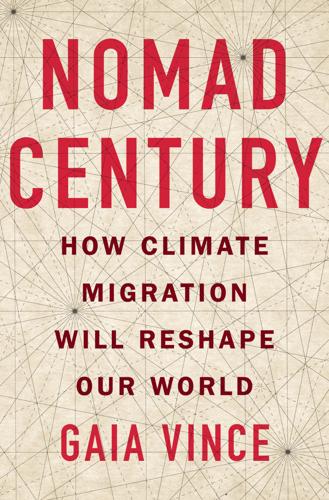
Nomad Century: How Climate Migration Will Reshape Our World
by
Gaia Vince
Published 22 Aug 2022
Unfortunately, the way we farm fish today is also deeply unsustainable. Fish are plied with antibiotics and fed with enormous amounts of wild fish or corn and soy. This broken, unsustainable relationship between our environment and our food production is the culmination of a process that began with the invention of agriculture some 10,000 years ago, eventually enabling the vast population of today’s Anthropocene. In the thirty years from 1820 to 1850, as human population passed 1 billion, it’s estimated that 600,000 square kilometres of land in the Americas, Africa and Asia were opened up to farming – an area the size of Europe.

Four Arguments for the Elimination of Television
by
Jerry Mander
Published 1 Jan 1977
Rooms insi{/e Rooms There are differences of opinion about what the critical mo- ments were that led human beings away fronl the primary forms of experience-between person and planet-into secondary, 66 THE WALLING OF AWARENESS mediated environments. Some go back as far as the control of fire, the domestication of animals, the invention of agriculture or the imposition of monotheism and patriarchy. In my opinion, however, the most significant recent moment came with the control of electricity for power, about four gen- erations ago. This made it possible to begin moving nearly all hunlan functions indoors, and made the outdoors more like indoors.
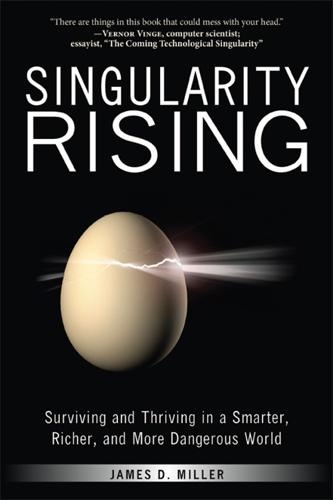
Singularity Rising: Surviving and Thriving in a Smarter, Richer, and More Dangerous World
by
James D. Miller
Published 14 Jun 2012
FURTHER IMPLICATIONS OF A SINGULARITY From the time of Alexander the Great up to that of George Washington, the lot of the average person didn’t much change because there was little economic growth. On average, a man lived no better than his great-grandfathers did. But shortly after Washington’s death, an industrial revolution swept England that married science to business. The Industrial Revolution was the most important turning point in history since the invention of agriculture because it created sustained economic growth arising from innovation—the creation of new and improved goods and services. Innovation, and therefore economic growth, comes from human brains. Think of our economy as a car. Before the Industrial Revolution, the car was as likely to move backward as forward.

Present Shock: When Everything Happens Now
by
Douglas Rushkoff
Published 21 Mar 2013
Rather than being paced by our technologies, we can just as easily program our technologies to follow our own paces—or those of our enterprise’s remaining natural cycles. Or better than simply following along, technologies can sync to us and generate greater coherence for all of us in the process. After all, people have been achieving the benefit of sync since the invention of agriculture. Farmers learned that certain crops grow better in particular climates and seasons, so they plant the right seeds at the right times. Not only is the crop better and more bountiful when planting is organized in this fashion, but the fruits, vegetables, and grains available end up better matched to the human physiology’s needs during that season.

The Uninhabitable Earth: Life After Warming
by
David Wallace-Wells
Published 19 Feb 2019
Secretary-General António Guterres believes we have only one year to change course and get started. The scale of the technological transformation required dwarfs any achievement that has emerged from Silicon Valley—in fact dwarfs every technological revolution ever engineered in human history, including electricity and telecommunications and even the invention of agriculture ten thousand years ago. It dwarfs them by definition, because it contains all of them—every single one needs to be replaced at the root, since every single one breathes on carbon, like a ventilator. To remake each of these systems so that they don’t is less like distributing smartphones or floating wifi balloons over Kenya or Puerto Rico, as Google intends to, than like building an interstate highway system or constructing a subway network or a new kind of power grid connected to a new array of energy producers and new kind of energy consumer.
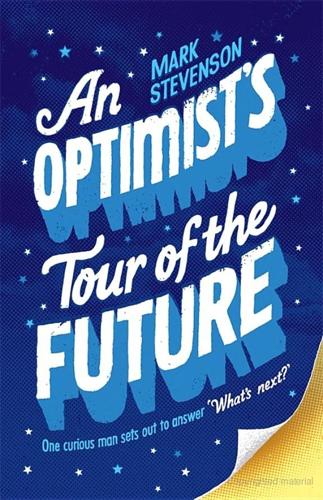
An Optimist's Tour of the Future
by
Mark Stevenson
Published 4 Dec 2010
But what has this to do with nanotechnology? The same Stewart Brand who suggested the impacts of nanotechnology would be ‘revolutionary-times-revolutionary’ provides a link in his book Whole Earth Discipline: An Ecopragmatist Manifesto: Peace can break out, though, when carrying capacity is pushed up suddenly, as with the invention of agriculture, or newly effective bureaucracy, or remote trade or technological breakthroughs. Nanotechnology can potentially (and dramatically) increase carrying capacity and, crucially, the distribution of resources – because everyone has the raw materials needed to make whatever they need, including food.

How the Mind Works
by
Steven Pinker
Published 1 Jan 1997
Institutional nepotism is officially illicit in our society, though it is widely practiced, and in most societies people are surprised to hear that we consider it a vice. In many countries a newly appointed official openly fires all the civil servants under him and replaces them with relatives. Relatives are natural allies, and before the invention of agriculture and cities, societies were organized around clans of them. One of the fundamental questions of anthropology is how foraging people divide themselves into bands or villages, typically with about fifty members though varying with the time and place. Napoleon Chagnon amassed meticulous genealogies that link thousands of members of the Yanomamö, the foraging and horticultural people of the Amazon rainforest whom he has studied for thirty years.
…
Typically a man who has been married for some time seeks a younger wife. The senior wife remains his confidante and partner and runs the household; the junior one becomes his sexual interest. In foraging societies wealth cannot accumulate, but a few fierce men, skilled leaders, and good hunters may have two to ten wives. With the invention of agriculture and massive inequality, polygyny can reach ridiculous proportions. Laura Betzig has documented that in civilization after civilization, despotic men have implemented the ultimate male fantasy: a harem of hundreds of nubile women, closely guarded (often by eunuchs) so no other man can touch them.
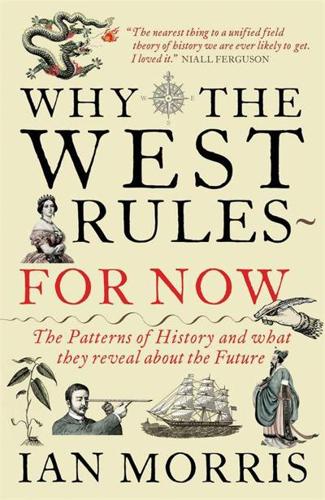
Why the West Rules--For Now: The Patterns of History, and What They Reveal About the Future
by
Ian Morris
Published 11 Oct 2010
A handful of thinkers approach the question very differently, focusing on distant prehistory then skipping ahead to the modern age, saying little about the thousands of years in between. The geographer and historian Alfred Crosby makes explicit what many of these scholars take for granted—that the prehistoric invention of agriculture was critically important, but “between that era and [the] time of development of the societies that sent Columbus and other voyagers across the oceans, roughly 4,000 years passed, during which little of importance happened, relative to what had gone before.” This, I think, is mistaken. We will not find answers if we restrict our search to prehistory or modern times (nor, I hasten to add, would we find them if we limited ourselves to just the four or five millennia in between).
…
Hard as it is to get our minds around the idea, the trends of the last couple of centuries are leading toward a change in what it means to be human, making possible the vast cities, astonishing energy levels, apocalyptic weapons, and science-fiction kinds of information technology implied by social development scores of five thousand points. This book has been full of upheavals in which social development jumped upward, rendering irrelevant many of the problems that had dominated the lives of earlier generations. The evolution of Homo sapiens swept away all previous ape-men; the invention of agriculture made many of the burning issues of hunter-gatherer life unimportant; and the rise of cities and states did the same to the concerns of prehistoric villagers. The closing of the steppe highway and the opening of the oceans ended realities that had constrained Old World development for two thousand years, and the industrial revolution of course made mockery of all that had gone before.

In Our Own Image: Savior or Destroyer? The History and Future of Artificial Intelligence
by
George Zarkadakis
Published 7 Mar 2016
However, their analysis assumes that all other things will remain more or less equal, for instance our political system of parliamentary representation, or our free economies of prices mostly regulated by markets. But this is not necessarily so. Indeed, history has already shown us that major technological changes are the causes of social and economic paradigm shifts. For instance, we refer to the invention of agriculture around 12,000 years ago as the ‘agricultural revolution’ because it completely changed how people lived and organised themselves. Nomads and hunter-gatherers who once roamed freely over lands belonging to no one became the subjects of kingdoms and empires with hereditary property laws. The Industrial Revolution that began in late eighteenth century created a new stratification in society, with the professional and entrepreneurial middle classes displacing the landed gentry and nobility.
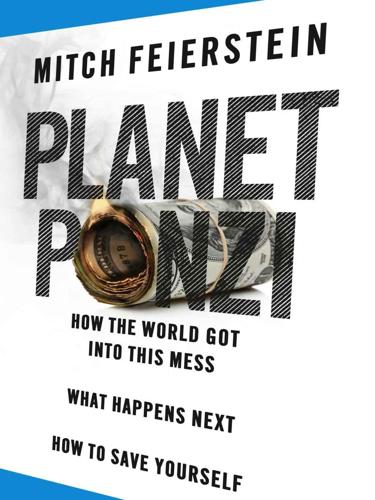
Planet Ponzi
by
Mitch Feierstein
Published 2 Feb 2012
I don’t know how the world will look in 1.5 billion years’ time, but 1.5 billion years ago, the planet was in the middle of the Proterozoic Eon. The planet hadn’t too long ago encountered its first multicellular organisms and the big new thing was fungi. There were no plants. No vertebrates or invertebrates. Dinosaurs lay way, way into the future. Ditto mammals. Double ditto humanity. Triple ditto the invention of agriculture, the first cities, the origin of writing. And from that unimaginably distant point to this, you and your partner would need to toil away, earning $50,000 a year, not one penny of which you could keep, in order to generate the funds needed to pay off the US government’s debt.8 At this point, however, I need to come clean.

Human Frontiers: The Future of Big Ideas in an Age of Small Thinking
by
Michael Bhaskar
Published 2 Nov 2021
In the words of David Wallace-Wells: The scale of technological transformation required dwarfs any achievement that has emerged from Silicon Valley – in fact dwarfs every technological revolution ever engineered in human history, including electricity and telecommunications and even the invention of agriculture ten thousand years ago. It dwarfs them by definition, because it contains all of them – every single one needs to be replaced at the root, since every single one breathes on carbon, like a ventilator.104 Another way of thinking about this is that we would need to add the equivalent of a nuclear power plant to the global grid every single day for the fifty years from 2000 to 2050.
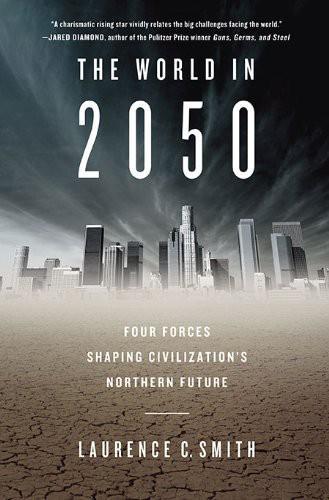
The World in 2050: Four Forces Shaping Civilization's Northern Future
by
Laurence C. Smith
Published 22 Sep 2010
FOUR GLOBAL FORCES The first global force is demography, which essentially means the ups, downs, and movements of different population groups within the human race. Demographic measures include things like birth rates, income, age structure, ethnicity, and migration flows. We shall examine all of these in due course but for now, let us start with the most basic yet profound measure of all: the total number of people living on Earth. Before the invention of agriculture some twelve thousand years ago, there were perhaps one million persons in the world.12 That is roughly the present-day population of San Jose, California. People foraged and hunted the land, living in small mobile clans. It took twelve thousand years (until about 1800 A.D.) for our numbers to grow to one billion.

Digital Disconnect: How Capitalism Is Turning the Internet Against Democracy
by
Robert W. McChesney
Published 5 Mar 2013
Obviously I am making broad generalizations that in a more detailed study would demand all sorts of elaboration and qualification, but for my purposes this level of abstraction is appropriate for the task, and similar to what other Internet observers provide. As you may have already guessed, the short answer to the chapter title’s question is no. The long answer follows. Foundations of Capitalism The relevant history begins roughly eight to ten thousand years ago with the invention of agriculture and the domestication of large mammals. Then, for the first time, humans were able to generate a regular surplus, producing more than was necessary to keep everyone alive. For the previous fifty to two hundred millennia humans had existed in nomadic hunting-gathering tribes. These were effectively classless societies, and only in rare instances were they able to generate a regular surplus.

Apollo's Arrow: The Profound and Enduring Impact of Coronavirus on the Way We Live
by
Nicholas A. Christakis
Published 27 Oct 2020
For instance, motor-vehicle fatalities fell during the winter and spring of 2020, as fewer people were on the road; there were fewer deaths due to complications from noncritical medical procedures, as hospitals had canceled elective procedures; fewer babies were born premature (possibly because their homebound mothers were under less physical stress or were less exposed to all pathogens); and fewer people lost their lives to respiratory conditions, as air pollution was reduced due to the cessation of manufacturing activity.87 * * * The emergence of pandemics is not restricted to the twentieth century or to respiratory illnesses caused by coronavirus or influenza, of course. Dramatic outbreaks of infectious diseases have afflicted human beings for a long time. Pathogens are just as important to our species as the predators we faced in our distant evolutionary past. And infectious diseases, like other major forces—from the invention of agriculture and cities to the occurrence of economic crises and wars—have shaped our societies in our historical past. The original plague referred to a particular condition—namely, bubonic plague. This condition has what historian Frank Snowden has called “four protagonists.” First, there is the causative bacterium itself, Yersinia pestis.88 Then there is the flea by which it moves.

The Rise and Fall of American Growth: The U.S. Standard of Living Since the Civil War (The Princeton Economic History of the Western World)
by
Robert J. Gordon
Published 12 Jan 2016
According to the great historian of economic growth, Angus Maddison, the annual rate of growth in the Western world from AD 1 to AD 1820 was a mere 0.06 percent per year, or 6 percent per century.1 As succinctly stated by economic commentator Steven Landsburg, Modern humans first emerged about 100,000 years ago. For the next 99,800 years or so, nothing happened. Well, not quite nothing. There were wars, political intrigue, the invention of agriculture—but none of that stuff had much effect on the quality of people’s lives. Almost everyone lived on the modern equivalent of $400 to $600 a year, just above the subsistence level…. Then—just a couple of hundred years ago—people started getting richer. And richer and richer still.2 This book adopts the “special century” approach to economic growth, holding that economic growth witnessed a singular interval of rapid growth that will not be repeated—the designation of the century between 1870 and 1970 as the special epoch applies only to the United States, the nation which has carved out the technological frontier for all developed nations since the Civil War.
…
Though most of the funding for these universities and colleges was provided by state governments, the federal government through the Department of Agriculture provided most of the funding for the agricultural research activities.65 The transition of American agriculture between 1870 and 1940 to much higher levels of output per person and per acre relied on more than the invention of agricultural machinery by private entrepreneurs such as Cyrus McCormick and John Deere. The government played a major role in making modern agriculture possible through the Agricultural Extension Service, which provided the research that individual farmers could not possibly perform on their own. The service did fundamental research on “the maintenance of soil fertility, the development of improved crop varieties, the control of plant diseases and insects, the breeding and feeding of animals, … as well as those principles which have to do with the marketing and distribution of the products of the farm.”

Future Shock
by
Alvin Toffler
Published 1 Jun 1984
This idea crops up with increasing frequency in the writings of scientists and technologists. Sir George Thomson, the British physicist and Nobel prizewinner, suggests in The Foreseeable Future that the nearest historic parallel with today is not the industrial revolution but rather the "invention of agriculture in the neolithic age." John Diebold, the American automation expert, warns that "the effects of the technological revolution we are now living through will be deeper than any social change we have experienced before." Sir Leon Bagrit, the British computer manufacturer, insists that automation by itself represents "the greatest change in the whole history of mankind."

Scale: The Universal Laws of Growth, Innovation, Sustainability, and the Pace of Life in Organisms, Cities, Economies, and Companies
by
Geoffrey West
Published 15 May 2017
It shone every day and any variation in its output occurred over long enough periods of time for adaptations to accommodate to the change. This ongoing, ever-evolving, quasi-steady state very slowly began to change with our discovery of fire, which is the chemical process that releases the sun’s energy stored in dead wood. When coupled with the invention of agriculture, this began the transition to the Anthropocene as we emerged from a purely biological organism to our present state as an urbanized socioeconomic creature no longer in meta-equilibrium with the “natural” world. The truly dramatic and revolutionary departure from almost three billion years of sustainable business as usual came about in just the last two hundred years when our discovery and exploitation of the sun’s energy stored underground in coal and oil heralded the beginning of the Urbanocene.
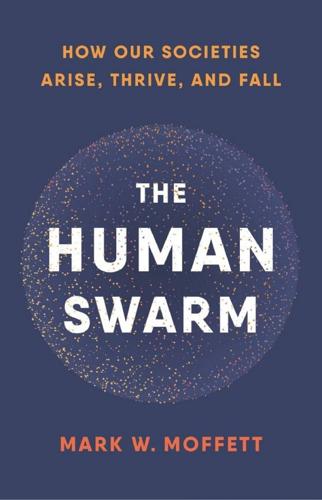
The Human Swarm: How Our Societies Arise, Thrive, and Fall
by
Mark W. Moffett
Published 31 Mar 2019
Pastoralist tribes like the Huns could disperse to camps part of the year to secure pasturage for their domestic animals.10 What most set them apart was the pattern of movement of their members: nomadic hunter-gatherers spread out by fission-fusion, with people roaming with considerable freedom. Fission-fusion nevertheless generally took a regimented form for the nomadic hunter-gatherers of recent times, as it presumably did for those living prior to the invention of agriculture as well. People mostly clumped here and there in bands. Each band consisted of on average 25 to 35 individuals comprising several, usually unrelated, nuclear families, often spanning three generations.11 A person could visit other bands, yet tended to keep a long-term connection with one.

Slouching Towards Utopia: An Economic History of the Twentieth Century
by
J. Bradford Delong
Published 6 Apr 2020
One short and too-simple answer is that the fault lies with governments—specifically, with governmental institutions that were “extractive” rather than “developmental,” in the currently fashionable jargon of growth economists. We are talking here about kleptocracy: government not by one ruler (monarchy), or by the self-proclaimed best (aristocracy), or by the people (democracy), or by the rich (plutocracy)—but, rather, rule by thieves. Yet kleptocracy is nothing new. Perhaps the major drawback to the invention of agriculture was that you had to be around to harvest the fields that you planted. This meant that you could not run away when thugs with spears came by to demand the lion’s share of your crops. And as this practice became general, people got into the business of supplying spears for the thugs, and the thugs began to organize hierarchically: we call the people at the top of the thug hierarchies “kings.”
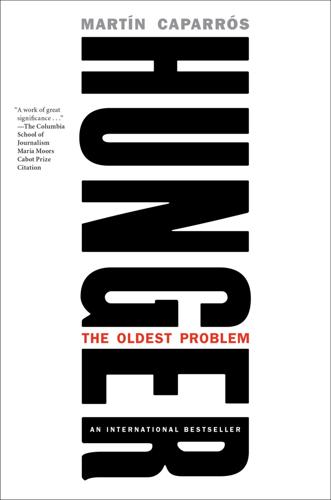
Hunger: The Oldest Problem
by
Martin Caparros
Published 14 Jan 2020
I’ve asked myself many times, but I never know.” They talk about the drought. Whenever they talk about hunger in Niger, in the Sahel in general, they always talk about the drought. It’s true, weather is a factor: for example, the drought last year, notorious climate change, things like that. For millennia, ever since the invention of agriculture, humans have depended on the weather, feared the weather. In order to believe they could control it—or at least, attenuate its effects—they invented gods and offered them their goods, their lives, their destinies. A little more than a century ago, they learned how to predict, sometimes even with a bit of accuracy.
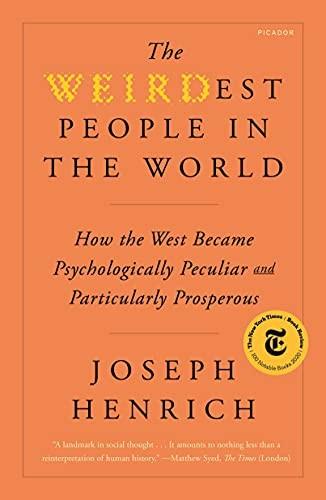
The WEIRDest People in the World: How the West Became Psychologically Peculiar and Particularly Prosperous
by
Joseph Henrich
Published 7 Sep 2020
Journal of Personality and Social Psychology 81, 922–34. Mathew, S., and Boyd, R. (2011). Punishment sustains large-scale cooperation in prestate warfare. Proceedings of the National Academy of Sciences 108 (28), 11375–80. Matranga, A. (2017). The ant and the grasshopper: Seasonality and the invention of agriculture. Working paper, mpra.ub.uni-muenchen.de/76626. Mazur, A., and Booth, A. (1998). Testosterone and dominance in men. Behavioral and Brain Sciences 21 (3), 353–63. Mazur, A., and Michalek, J. (1998). Marriage, divorce, and male testosterone. Social Forces 77 (1), 315–30. McBryde, I. (1984).
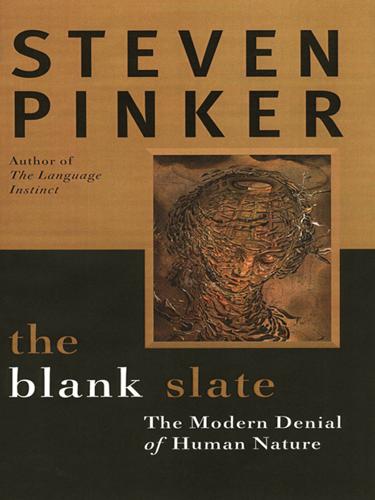
The Blank Slate: The Modern Denial of Human Nature
by
Steven Pinker
Published 1 Jan 2002
The reason is that our ancestors passed through a population bottleneck fairly recently in our evolutionary history (less than a hundred thousand years ago) and dwindled to a small number of individuals with a correspondingly small amount of genetic variation. The species survived and rebounded, and then underwent a population explosion after the invention of agriculture about ten thousand years ago. That explosion bred many copies of the genes that were around when we were sparse in number; there has not been much time to accumulate many new versions of the genes. At various points after the bottleneck, differences between races emerged. But the differences in skin and hair that are so obvious when we look at people of other races are really a trick played on our intuitions.

The Meritocracy Trap: How America's Foundational Myth Feeds Inequality, Dismantles the Middle Class, and Devours the Elite
by
Daniel Markovits
Published 14 Sep 2019
Interested innovators adjust the technologies that they invent to suit economic background conditions, including in particular the resource base that their society possesses—the broad set of assets that new technologies might exploit. This has been so from the very earliest days of innovation, indeed since the invention of agriculture. In the first agrarian economies, for example, a society in an arid country might develop drip irrigation, while a society with numerous rivers might develop paddy field farming. Later the abundance of slave labor in the ancient world is often said to help explain why even very advanced societies never industrialized.
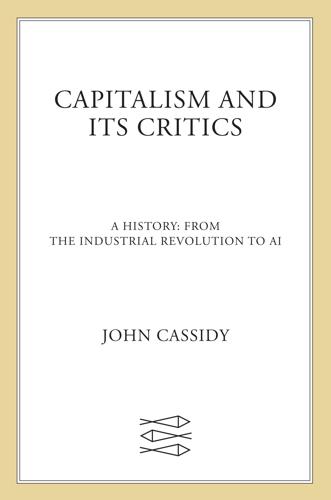
Capitalism and Its Critics: A History: From the Industrial Revolution to AI
by
John Cassidy
Published 12 May 2025
The factory system—based on mechanization, nonanimate power, and wage labor hired by capitalists—would gradually spread to other British industries, including woolen textiles, and to other countries, including the newly independent United States. Pointing to the vertiginous rise in output, productivity, and trade that this system unleashed, the historian Eric Hobsbawm described its emergence as “probably the most important event in world history, at any rate since the invention of agriculture and cities.”3 Hobsbawm issued this judgment in 1962. Subsequent historical research has qualified it somewhat. Cotton-led industrialization didn’t transform the rest of the British economy as rapidly as was once thought. Between 1780 and 1820, overall GDP growth remained relatively slow—less than 1.5 percent a year.4 If we take a longer-term view, however, Hobsbawm’s basic point surely stands, as the chart of world GDP over the past two millennia on the next page shows.5 It looks like a hockey stick.

Global Catastrophic Risks
by
Nick Bostrom
and
Milan M. Cirkovic
Published 2 Jul 2008
Arguments have been made that these evolutionary processes are having little effect on our species at the present time (Jones, 1991). If so, this is simply because our species is experiencing a rare halcyon period in its history. During the evolutionary eye blink of the last 1 0,000 years, since the invention of agriculture and the rise of technology, our population has expanded dramatically. The result has been that large numbers of individuals who would otherwise have died have been able to survive and reproduce. I have argued elsewhere (Wills, 1 998) and will explore later in this chapter the thesis that even this halcyon period may be largely an illusion.
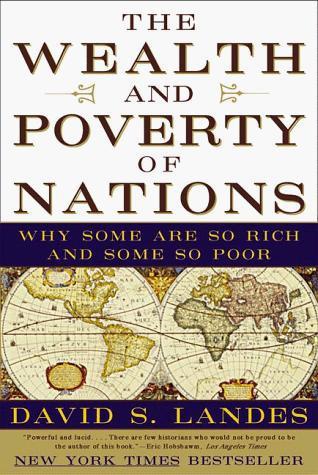
The Wealth and Poverty of Nations: Why Some Are So Rich and Some So Poor
by
David S. Landes
Published 14 Sep 1999
This long multicentennial maturation (1000-1500) rested on an economic revolution, a transformation of the entire process of making, getting, and spending such as the world had not seen since the so-called Neolithic revolution. That one (c. -8000 to -3000) had taken thousands of years to work itself out. Its focus had been the invention of agriculture and the domestication of livestock, both of which had enormously augmented the energy available for work. (All economic [industrial] revolutions have at their core an enhancement of the supply of energy, because this feeds and changes all aspects of human activity.) This shift away from hunting and gathering, bringing a leap in the supply of nourishment, permitted a substantial growth of population and a new pattern of concentrated settlement.
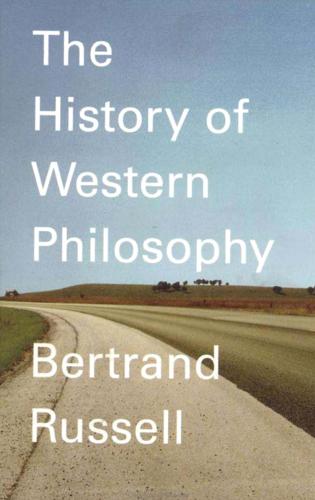
A History of Western Philosophy
by
Aaron Finkel
Published 21 Mar 1945
The most important effect of machine production on the imaginative picture of the world is an immense increase in the sense of human power. This is only an acceleration of a process which began before the dawn of history, when men diminished their fear of wild animals by the invention of weapons and their fear of starvation by the invention of agriculture. But the acceleration has been so great as to produce a radically new outlook in those who wield the powers that modern technique has created. In old days, mountains and waterfalls were natural phenomena; now, an inconvenient mountain can be abolished and a convenient waterfall can be created.

Europe: A History
by
Norman Davies
Published 1 Jan 1996
It consists of a chain of some 30 or 40 related changes, each link of which forms a necessary component in the total operation. It certainly includes and subsumes industrialization and ‘the Industrial Revolution’, which is now usually taken to be just one vital part, or one stage, of the overall process. ‘No change in human life since the invention of agriculture, metallurgy, and towns in the New Stone Age has been so profound as the coming of industrialisation.’4 By general consent, modernization was first experienced in Great Britain—or rather in certain regions of Great Britain such as Lancashire, Yorkshire, the Black Country, Tyneside, Clydebank, and South Wales.